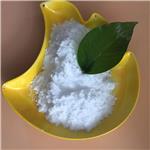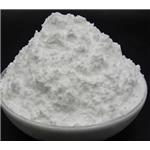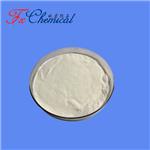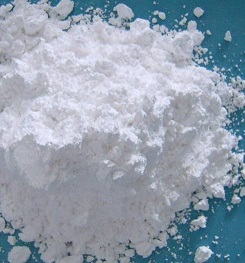- Lithium chloride
-

- $0.00 / 1kg
-
2025-04-24
- CAS:7447-41-8
- Min. Order: 1kg
- Purity: 99%
- Supply Ability: 1000
- Lithium chloride
-

- $3.50 / 1kg
-
2025-04-24
- CAS:7447-41-8
- Min. Order: 1kg
- Purity: 0.99
- Supply Ability: 3000tons/month
- Lithium chloride
-

- $0.00 / 25KG
-
2025-04-24
- CAS:7447-41-8
- Min. Order: 25KG
- Purity: 98%min
- Supply Ability: 30tons/month
|
| | Lithium chloride Basic information |
| Product Name: | Lithium chloride | | Synonyms: | lithium atomic spectroscopy standard concentrate 1.00 g li;lithium chloride, acs;lithium chloride, ultra dry;lithium ion standard solution;LITHIUMCHLORIDE,CRYSTAL,REAGENT,ACS;LITHIUMCHLORIDE,POWDER,REAGENT,ACS;Lithium, Ion chromatography standard solution, Specpure(R), Li- 1000μg/ml;Lithium chloride, anhydrous, 99% min | | CAS: | 7447-41-8 | | MF: | LiCl | | MW: | 42.39 | | EINECS: | 231-212-3 | | Product Categories: | Pyridines;LITHIUM COMPOUNDS;LithiumMolecular Biology;Plant Nucleic Acid Purification;Chemical Synthesis;Inorganic Salts;Synthetic Reagents;ACS GradeSynthetic Reagents;Essential Chemicals;BioUltraProtein Structural Analysis;DNA&RNA Purification;Molecular Biology;Molecular Biology Reagents;Optimization ReagentsMolecular Biology;Reagents;X-Ray Crystallography;Crystal Grade Inorganics;Lithium Salts;LithiumMetal and Ceramic Science;Metal and Ceramic Science;Salts;Inorganic Salts;Lithium;Synthetic Reagents;Cell Separation (Centrifugation) MediaEssential Chemicals;Hematology and Histology;Reagent Plus;Routine Reagents;Classes of Metal Compounds;Li (Lithium) Compounds;Typical Metal Compounds;Inorganics;metal halide;Lithium Salts;Ceramic Science;Crystal Grade Inorganics;Materials Science;Metal &;Metal and Ceramic Science;New Products for Materials Research and Engineering;3: Li;Beaded Materials;Analytical Reagents for General Use;E-L, Puriss p.a. ACS;Puriss p.a. ACS;ReagentsPlant Molecular Biology;Optimization Reagents;bc0001;7447-41-8 | | Mol File: | 7447-41-8.mol |  |
| | Lithium chloride Chemical Properties |
| Melting point | 605 °C (lit.) | | Boiling point | 1383 °C/1 atm (lit.) | | bulk density | 530kg/m3 | | density | 2.06 | | vapor pressure | 1.33 hPa (547 °C) | | refractive index | n20/D 1.381 | | Fp | -4 °F | | storage temp. | 2-8°C | | solubility | H2O: soluble | | pka | 2.256[at 20 ℃] | | form | beads | | Specific Gravity | 2.068 | | color | White to gray | | PH | 5.5-7.5 (25℃, 50mg/mL in H2O) | | Odor | Odorless | | PH Range | 6 | | Flame Color | Pink/fuchsia | | Water Solubility | 832 g/L (20 ºC) | | Sensitive | Hygroscopic | | λmax | λ: 260 nm Amax: 0.01
λ: 280 nm Amax: 0.01 | | Crystal Structure | NaCl type | | crystal system | Cube | | Merck | 14,5528 | | Space group | Fm3m | | Lattice constant | | a/nm | b/nm | c/nm | α/o | β/o | γ/o | V/nm3 | | 0.514 | 0.514 | 0.514 | 90 | 90 | 90 | 0.13579 |
| | Stability: | Stable. Incompatible with strong oxidizing agents, strong acids, bromine trichloride, bromine trifluoride. Very hygroscopic. Protect from moisture. | | InChIKey | KWGKDLIKAYFUFQ-UHFFFAOYSA-M | | LogP | -1 | | CAS DataBase Reference | 7447-41-8(CAS DataBase Reference) | | NIST Chemistry Reference | Lithium chloride(7447-41-8) | | EPA Substance Registry System | Lithium chloride (7447-41-8) |
| | Lithium chloride Usage And Synthesis |
| Chemical Properties | Lithium chloride is a White cubic crystals; granules or powder; hygroscopic; sharp salt-like taste; melts at 605°C; vaporizes around 1360°C, It has an unusually high water solubility when compared to the other alkali metal chlorides; readily dissolves in water (64g/100mL at 0°C); also highly soluble in alcohol and pyridine; moderately soluble in acetone (4.1 g/100mL at 25°C).
The following hydrates are known: LiCl·H2O, LiCl-3H20 and LiCl- 5H2O. The higher hydrates are stable at progressively lower temperatures. Lithium chloride is deliquescent under normal atmospheric conditions.
Lithium chloride is soluble to a significant extent in many polar organic liquids. It is generally most soluble in alcohols in which the solubility decreases as the size of the organic radical increases.

It dehumidifies air for industrial drying and for air conditioning. Lithium chloride bums with a chrims on flame and is used in pyrotechnics. It is also used as a pyrotechnic in welding and brazing fluxes. | | Physical properties | White cubic crystals; granules or powder; hygroscopic; sharp salt-like taste; refractive index 1.662; density 2.068 g/cm3; melts at 605°C; vaporizes around 1,360°C; readily dissolves in water (64g/100mL at 0°C); also highly soluble in alcohol and pyridine; moderately soluble in acetone (4.1 g/100mL at 25°C). | | Uses | Lithium chloride is useful for the production of lithium metal, and for the generation of Mn(0) species which can be used in free radical cyclizations. It can serve as a flame colorant to generate dark red flames, a brazing flux for aluminum in automobiles, a hygrometer, and a desiccant for drying air streams. On exposure to air, it becomes a solution with the concentration directly related to relative humidity of the atmosphere, and hence serves as a relative humidity standard in calibrating hygrometers. Apart from being a source of chloride, it serves as an additive in the Stille reaction in organic synthesis, and to precipitate RNA from cellular extracts. Being biologically significant, it finds applications in a wide variety of assays to study cell-fate and neurobiology. Lithium chloride has been found to inhibit virus infection. | | Application | Lithium chloride solution can be used:
(1) obtaining dendritic cells in the form of LiClPAM3 DCs;
(2) LiCl buffer preparation for immunoprecipitation;
(3) in the preparation of washing buffers;
(4) in the preparation of washing buffers for radioimmunoprecipitation assays (RIPA);
(5) can be used for selective precipitation of RNA. | | Definition | ChEBI: Lithium chloride is a metal chloride salt with a Li(+) counterion. It has a role as an antimanic drug and a geroprotector. It is an inorganic chloride and a lithium salt. | | Preparation | Lithium chloride may be prepared by reaction of lithium carbonate or lithium hydroxide with hydrochloric acid followed by crystallization:
(1) Li2CO3+ 2HCl →2LiCl + CO2+ H2O
(2) LiOH + HCl →LiCl + H2O
Crystallization above 95°C yields anhydrous salt. Hot solution upon cooling forms crystals of monohydrate, LiCl.H2O.
The solid and solution are separated and the supernatant solution is recycled for further evaporation. The crystals are dried to yield anhydrous lithium chloride.
Lithium chloride can be synthesized from its elements by heating lithium metal with chlorine gas.
It also may be obtained from natural brine. | | General Description | Colorless crystals or powder. Low toxicity. | | Air & Water Reactions | Very hygroscopic. Very soluble in water. | | Reactivity Profile | These materials have weak oxidizing or reducing powers. Redox reactions can however still occur. For example, CO2, which is often regarded as chemically inert, vigorously oxidizes the strong reducing agent Mg if the two are heated together. The majority of compounds in this class are slightly soluble or insoluble in water. If soluble in water, then the solutions are usually neither strongly acidic nor strongly basic. These compounds are not water-reactive. Some do react with acids: carbonates generate carbon dioxide and heat when treated with acids; fluorides, sulfites and sulfides generate toxic gases (hydrogen fluoride, sulfur dioxide and hydrogen sulfide, respectively) when treated with acids. | | Fire Hazard | Flash point data for Lithium chloride are not available. Lithium chloride is probably combustible. | | Industrial uses | Lithium chloride solutions are used in large dehumidification systems in the air-conditioning industry. This use depends on the low equilibrium pressure of water vapor above solutions of lithium chloride. After the solutions have absorbed water, they are regenerated by heating.
Lithium chloride is used in a number of salt mixtures. Such salt mixtures have low melting points allowing the material to be used in brazing fluxes and brazing baths. The molten lithium chloride-potassium chloride eutectic mixture can be used as an electrolyte. The mixture is electrolyzed for the production of lithium metal and is used as an electrolyte in voltaic cells.
Lithium chloride is also used in manufacture of mineral waters; in pyrotechnics; soldering aluminum; in refrigerating machines. | | Biochem/physiol Actions | Lithium chloride has the ability to block glycogen synthase kinase (GSK). It may also possess anti-inflammatory effects at low and non-toxic concentrations. | | Safety Profile | Human poison by
ingestion. Experimental poison by
intravenous and intracerebral routes.
Moderately toxic by subcutaneous and
intraperitoneal routes. Experimental
teratogenic and reproductive effects. Human
systemic effects by ingestion: somnolence,
tremors, nausea or vomiting. An eye and
severe skin irritant. Human mutation data
reported. Questionable carcinogen with
experimental neoplastigenic data. This
material has been recommended and used as
a substitute for sodwm chloride in "saltfree" diets, but cases have been reported in
which the ingestion of lithium chloride has
produced dminess, ringing in the ears,
visual disturbances, tremors, and mental
confusion. In most cases, the symptoms
disappeared when use was discontinued.
Prolonged absorption may cause disturbed
electrolyte balance, impaired renal function.
Reaction is violent with BrF3. When heated
to decomposition it emits toxic fumes of
Cl-. Used for dehumidification in the air
conditioning industry. Also used to obtain
lithum metal. See also LITHIUM
COMPOUNDS. | | Purification Methods | Crystallise it from water (1mL/g) or MeOH and dry it for several hours at 130o. Other metal ions can be removed by preliminary crystallisation from hot aqueous 0.01M disodium EDTA. It has also been crystallised from conc HCl, fused in an atmosphere of dry HCl gas, cooled under dry N2 and pulverised in a dry-box. Kolthoff and Bruckenstein [J Am Chem Soc 74 2529 1952] precipitated it with ammonium carbonate, washed it with Li2CO3 five times by decantation and finally with suction, then dissolved it in HCl. The LiCl solution is evaporated slowly with continuous stirring in a large evaporating dish, the dry powder being stored (while still hot) in a desiccator over CaCl2. |
| | Lithium chloride Preparation Products And Raw materials |
|